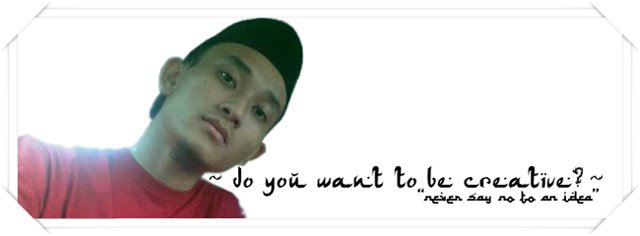Since I started to learn reading the Qur'an when I was a kid, I began to developed a new interest which is Khat or Arabic Calligraphy. For me, Arabic Calligraphy is one way of expressing my ideas, thinking, and creativity.
By having to know more about this special piece of art, I managed to explore more about myself. My way of life, my own characteristics and my creativity, piece by piece expanded to another level, each day of my life. Thus, by using this blog, I took this opportunity to share with people little information of what I have gathered about Arabic Calligraphy.
A Brief History
Islam in Arabic means "submission" and derives from a word meaning "peace," for it is in submitting to God's Will that human beings gain peace in their lives in this world and the hereafter. Islam is a universal message revealed in the sacred book, the Quran, through the Prophet Muhammad, and shares with the other Abrahamic religions, Judaism and Christianity, their ethical teachings and the belief in the One God. Islam is both a religion and a way of life.
For Muslims the Quran is the actual Word of God revealed through the archangel Gabrielle to the Prophet of Islam during the twenty-three year period of his prophetic mission. It was revealed in the Arabic language, which became therefore the language of Islam even for non-Arab Muslims.
Early calligraphic developments
The North Arabic script, which was influenced by the Nabatian script, was established in north-eastern Arabia and flourished in the 5 th century among the Arabian tribes who inhabited Hirah and Anbar. It spread to Hijaz in western Arabia, and its use was popularized among the aristocracy of Quraysh, the tribe of the Prophet Muhammad, by Harb ibn Ummayyah.
Although early Arabic sources mention several calligraphic styles in reference to the cities in which they were used, they generally fit into two broad categories with some minor variations, these are the "dry styles," the early predecessors of Kufic, and the "moist styles," the early predecessors of the cursive family or scripts.
 The reform of Arabic script
The reform of Arabic script
With the increasing number of non-Arab Muslims, there was a greater need for facilitating reading and learning of Arabic. Since several letters of the Arabic alphabet share the same shapes, and since vowels are not clearly indicated, some reform was needed to avoid confusion, and a system of Naqt or I'jam (letter-pointing), and Tashkeel (vowel indication) was developed.
Abul Aswad al Du'ali (d. 688) was the legendary founder of Arabic grammar, and is credited with inventing the system of placing large colored dots to indicate the Tashkeel. It was used with the Kufic scripts, but proved to be somewhat cumbersome to use with smaller scripts, or in ordinary writing.
The Ummayad governor al Hajjaj ibn Yusuf al Thaqafi enforced a uniform system to distinguish letters by using dots, which he asked two of al Du'ali's students to codify.
Al Khalil ibn Ahmad al Farahidi (d. 786) devised a tashkeel system to replace Abu al Aswad's. His system was universally used since the early eleventh century, and included six diacritical marks:
Fathah (a), Dammah (u), Kasrah (i), Sukun (vowelless), Shaddah (double consonant), and Maddah (vowel prolongation) which is applied to the Alef.
Development of cursive scripts
Cursive scripts coexisted with Kufic and date back to before Islam, but because in the early stages of their development they lacked discipline and elegance, they were usually used for secular purposes only.
Under the Ummayads and Abbasids, court requirements for correspondence and record keeping resulted in many developments to the cursive scripts, and several styles were devised to fulfill these needs. Abu Ali Muhammad Ibn Muqlah (d. 940), along with his brother, became accomplished calligraphers in Baghdad in an early age. Abu Ali became a Vizir to three Abbasid caliphs, and is credited with developing the first script to obey strict proportional rules. His system utilized the dot as a measuring unit for line proportions, and a circle with a diameter equals to the Alef's height as a measuring unit for letter proportions.
Ibn Muqlah's system became a powerful tool in the development and standardization of cursive scripts, and his calligraphic work elevated the previous cursive styles into a place of prominence, and made them acceptable as worthy of writing the Quran.
(Article and images taken from http://www.sakkal.com/ArtArabicCalligraphy.html)When Islam first evolved into Asean, especially in Malaysia (started in Malacca), Arabic words became an unusual thing for them. But then, after it has been received very well among its citizens, Arabic words and letters has been accepted to be used as their main writings.
Instead of using the Arabic words, people in this Malay Land, used only the letters and keep their Malay Language preserved and they called it as "Jawi" writings. Jawi has been used for hundreds of years already and it is still used for certain occasion or places in Malaysia and others around it.
There are many types of "Jawi" writings invented according to each inventors who may be love extra creativity being put into Jawi itself. This is also may be to ensure the generatioins after them still secure Jawi as part of their life too. The most popular types of Jawi are:
- Khat Thuluth
- Khat Nasakh
- Khat Kufi
- Khat Farsi
- Khat Req'ah
- Khat Dewani
I really love Jawi because everytime I use it for any occasion at any place, it remembers me about where did I come from and I really hope that this art would never be forgotten by the new generations for many many many years to come.
Here are some examples of this beautiful art. Enjoy how beautiful they are. :)

Khat Dewani (above) & Khat Thuluth (below)

Khat Kufi

Khat Thuluth

















































